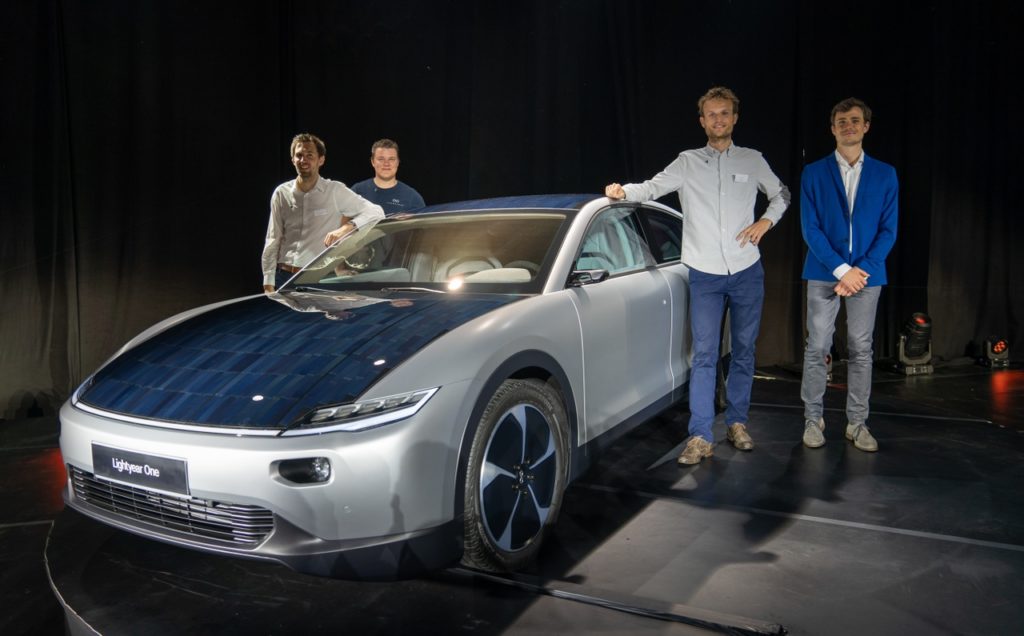Lightyear is a new Dutch manufacturer that introduces an electric car that can be charged by the integrated solar panels. The makers claim a range of 600 to 800 kilometers. On Tuesday, the five founders of the company showed the prototype of the Lightyear One to the public and investors.
More than one hundred customers have already ordered a car for 148.000 euros. “Compared to a classic EV, our car has a completely different construction,” says Lex Hoefsloot, one of the founders. Its sleek design is made by the Belgian former Pininfarina designer, Lowie Vermeersch. “Each wheel has its electric motor. The car has a smaller battery and is lower, making it more aerodynamic. The roof contains solar cells, but the car can also be charged with a plug, such as regular electric cars,” Martijn Lammers, another Lightyear founder, adds.
It started with a race
The company was founded in 2016 and now employs 130 people. The founders are former students at the Technical University of Eindhoven University of Technology who won the world’s most famous race for solar cars in Australia in 2016.
In this race, students with a solar-powered car try to cover as much distance as possible. They thought that it should be possible to apply this technology to passenger cars as well. The starting point is the same: drive as many kilometers on the sun as possible.
Up to 70 km on solar power
“The Lightyear One has a range of 600 to 800 km, which is more than the competition offers,” Hoefschoot told New Mobility. “On a sunny day, the solar panels alone provide enough power to drive 50 to 70 km.” To ensure a sufficient driving range, this hybrid car can also be charged by a classic charging plug.
Low consumption
The solar panels are incredibly efficient, allowing them to charge the battery. Nissan has already installed solar panels on the Leaf, but these only serve to condition the interior when the car is parked in the sun.
The Lightyear’s photovoltaic cells provide 1,25 kWh, so one hour of parking in the sun is enough to drive about 10 km. Because a car is parked on average 90% of the time, this system offers a lot of potentials.
Moreover, the engineers promise a very modest consumption of 10 kWh per 100 km. By way of comparison: a small Renault Zoe consumes 13,5 kWh and a large SUV, like the Audi eTron, needs an average of 24 kWh per 100 km.
First deliveries in 2021
Today only the prototype is shown. The first models will be delivered in 2021. To start production, the company needs a capital injection of 30 million euros provided by investors and subsidies.
The cars will finally be assembled in the Netherlands (Helmond). The plant has a capacity of 1.500 vehicles a year. The aim is to gradually increase the production volume so that the car can become more affordable in the future.
The Brussels Times

